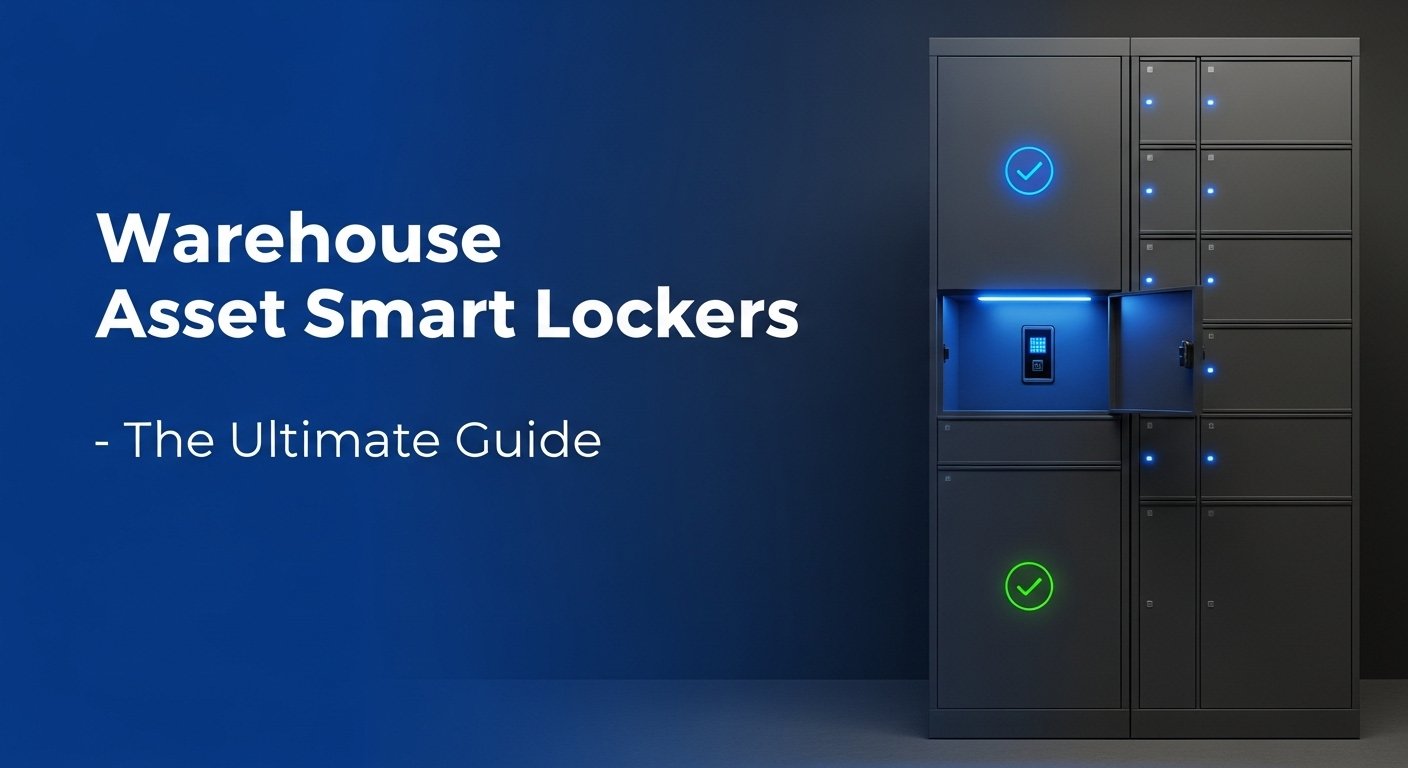Warehouses are more than just buildings, they’re crucial components of the logistics, supply chain, and fulfillment worlds across industries. They’re where goods are stored, picked, packed, and distributed to the next stage of the journey.
What Are Warehouse Asset Smart Lockers?
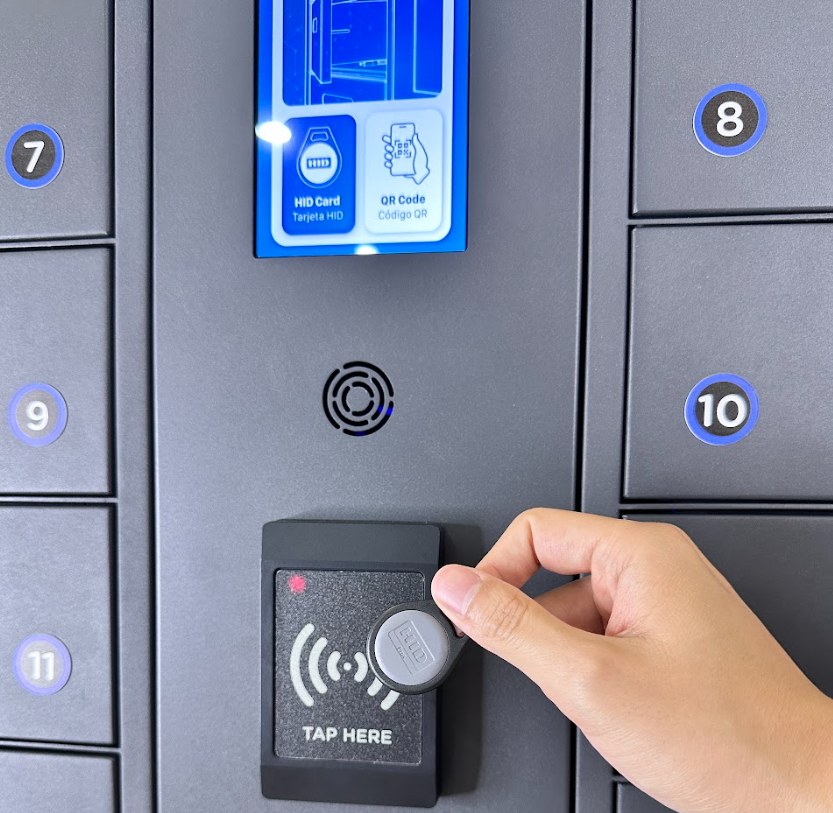
Warehouse asset smart lockers are secure, convenient, and automated storage solutions that leverage technology to help companies streamline and manage the distribution and tracking of devices, tools, and equipment. Like all smart lockers, they come in various shapes and sizes, but they generally feature the same crucial components, electronic locking mechanisms, charging ports (in many cases), and integrated software.
The software typically connects to the cloud or to an on-premises management system, allowing supervisors to control user access permissions, track activity logs, generate usage reports, and leverage notifications or alerts.
What really sets Warehouse Asset Smart Lockers apart from generic smart lockers is their readiness to handle rugged conditions and specialized devices. Warehouse workers aren’t just storing personal phones – they’re checking out RF scanners, portable label printers, specialized handheld computers, or even power tools.
The Challenges Warehouse Asset Smart Lockers Address
Smart lockers have become a valuable solution for companies in countless industries over the last few years – helping companies to adapt to increasing security threats, and accommodate a growing number of devices in the workplace. Warehouse asset smart lockers address challenges like:
- Inventory Control on Shared Equipment: Warehouses often rely on a shared pool of equipment – like barcode scanners, hand-held tablets, or specialized tools. Without a proper solution, employees can spend valuable time searching for (or waiting on) these items. Smart lockers store each device in a secure bay and log who took which item and when.
- Damaged or Missing Assets: Traditional lockers or open shelves don’t offer real accountability. Tools can easily get misplaced. But asset management lockers monitor exactly who has checked out a device and for how long, reducing theft and damage.
- Interruptions to Production: If a device breaks and there’s no clear record of who last used it, repairing or replacing it may be delayed. With a smart storage approach, supervisors get real-time data – helping them quickly locate a backup device or schedule maintenance.
- Administrative Overload: Manual sign-in/sign-out sheets or a complicated key-based system bog down daily operations. By comparison, the digital management platform for smart package lockers automates record-keeping and simplifies oversight.
Ultimately, Warehouse Asset Smart Lockers are designed to help you run your warehouse more smoothly. They enable fast, secure access to critical devices, reduce unproductive “equipment-hunting” time, and provide a clear audit trail for every item stored within.
The Benefits of Warehouse Asset Smart Lockers
Investing in warehouse asset smart lockers isn’t just about tackling common management challenges. Smart lockers benefit your business in a variety of ways.
In today’s environment, your competitiveness depends on being able to process and ship goods quickly, all while maintaining exceptional accuracy.
Your tools and devices are a crucial link in that chain. From the personal protective equipment (PPE) that keeps employees safe, to the handheld scanners that log every package, all of your resources need to be stored securely, and made easily accessible.
Warehouse asset smart lockers from companies like HonestWaves deliver:
1- Improved Tracking
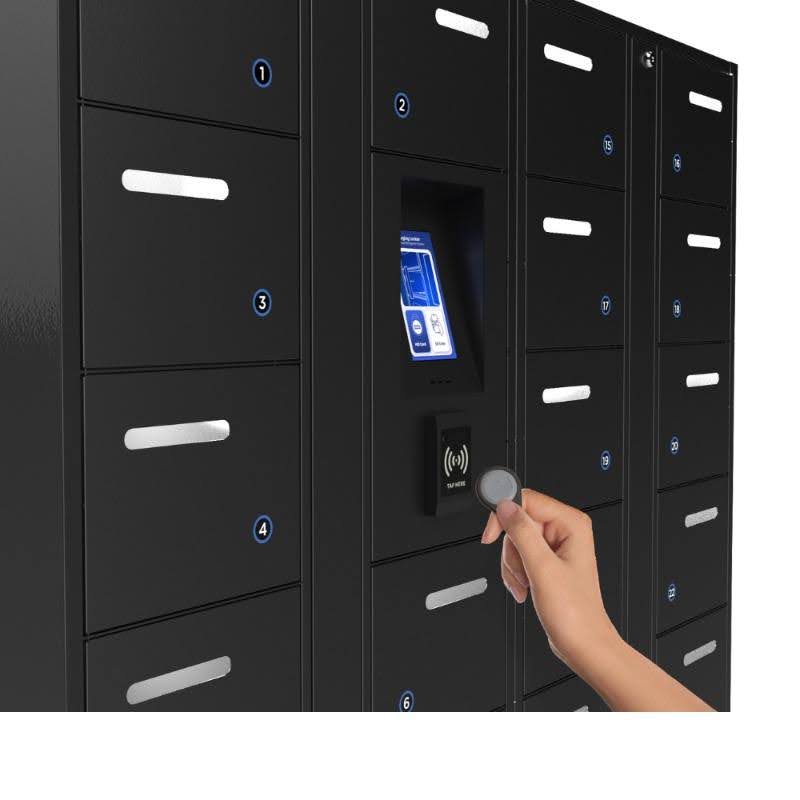
One of the biggest advantages of installing Warehouse Asset Smart Lockers is a leap in traceability. Whenever an employee accesses a locker, the system records:
- Which locker bay was accessed
- The time and date
- Which user ID (or credentials) were used
In a traditional manual sign-out system, human error (or forgetfulness) can cause mismatched records. Smart storage lockers eliminate the guesswork. If a piece of equipment is damaged or missing, managers know exactly who had it last. This drastically cuts down on “finger-pointing” and speeds up internal investigations.Many of HonestWaves’ smart lockers, like the 30 Bay Smart Charging locker, integrate seamlessly with your existing enterprise systems (like IT and security management tools), provide access to AI-powered tracking and insights, and gather information on usage trends that improve asset management. For example, if one device is consistently underused, you may decide to move it to another part of the warehouse or reassign it altogether.
2- Greater Security
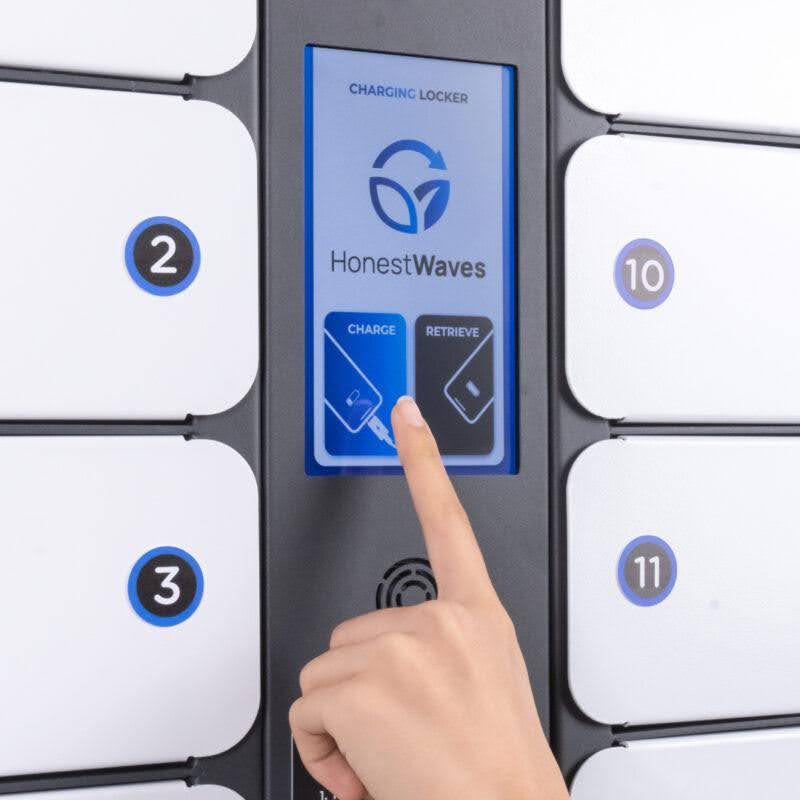
Probably one of the most obvious benefits of warehouse asset smart lockers is greater security.
Rather than relying on a padlock and key (which can be lost or copied), these lockers use digital credentials – often a combination of PIN codes, RFID badges, biometric scans, QR codes, or even mobile app-based keys.
Just look at the HonestWaves Smart SecureCharge 32 – It comes with PIN, RFID, and Biometric access control options. You can even use QR codes, dual authentication, and timed access controls.
That kind of security is crucial for warehouses, where high-value equipment needs to be securely locked away at all times. With HonestWaves, you can even adjust the level of access employees have based on their needs – creating different “roles” with varying permissions for each employee.
The net result? Fewer lost devices, fewer theft incidents, and a safer environment overall. Accountability is built in, and any attempt at unauthorized access or tampering is quickly reported.
3- Boosted Productivity
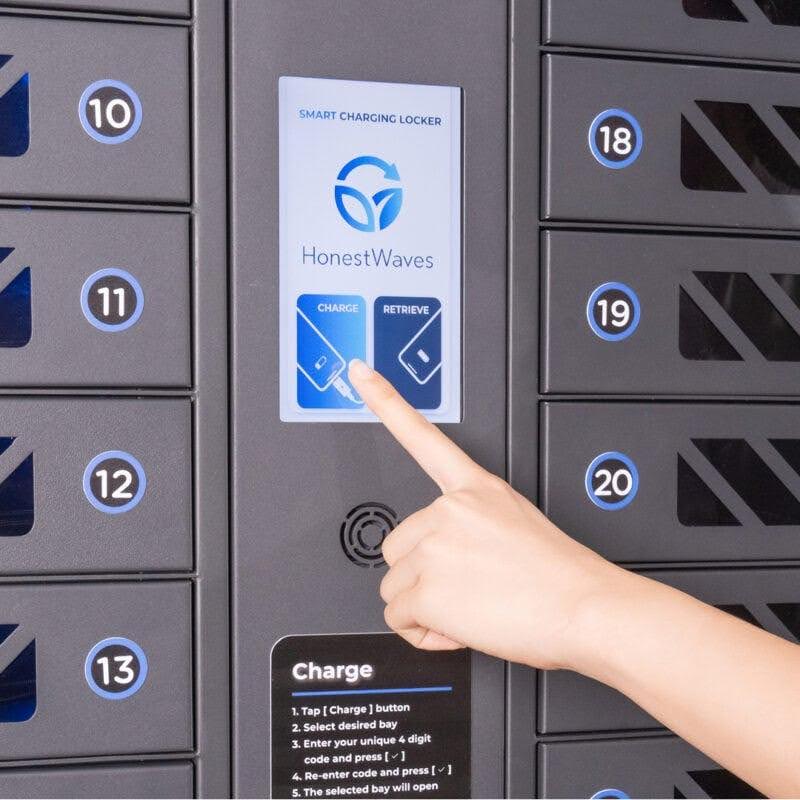
There’s a direct correlation between well-managed equipment and worker productivity. Countless hours can be wasted each month as employees search for the right tool or device—especially in expansive warehouse environments. Smart storage lockers solve this pain point by designating a single, well-known location for equipment.
Instead of rummaging through shelves or hoping the last user placed the device in a standard location, employees can simply retrieve a fully charged device from the locker. In fact, products like the HonestWaves Device SmartLocker 30 come with 30 super-fast charging bays for all kinds of devices.
Some systems (including the solutions from HonestWaves) even send a notification when a new item is ready for pickup. Productivity gains are realized both in everyday tasks and in the minimized downtime when a tool goes missing.
4- Increased Efficiency
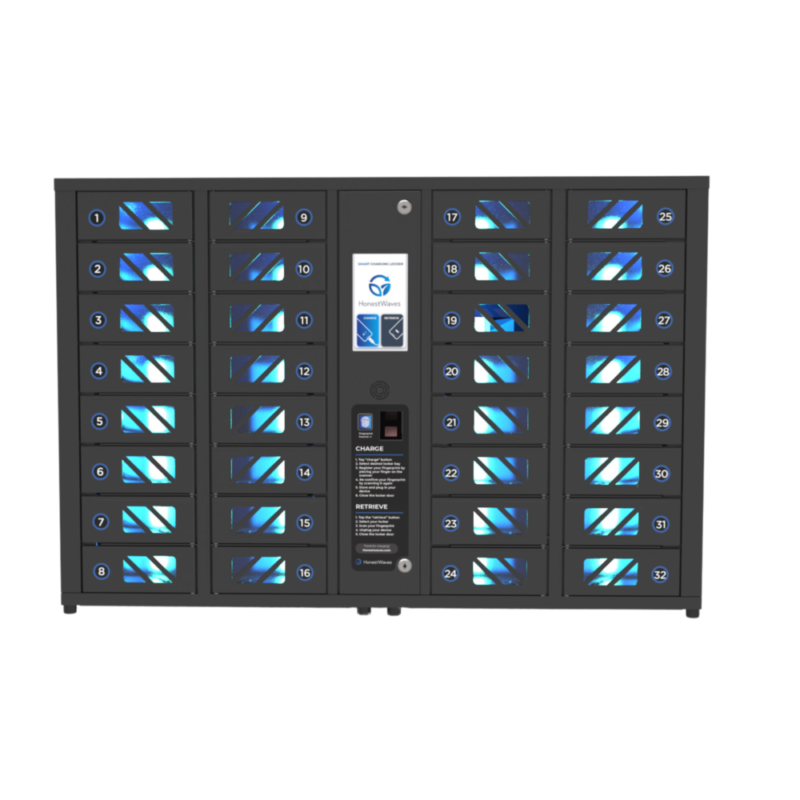
Beyond productivity in day-to-day operations, the data-driven nature of Warehouse Asset Smart Lockers powers greater efficiency across multiple metrics.
For instance, these systems provide real-time visibility into asset availability. A manager prepping for the next shift can see which devices are currently checked out and how many are stored and charging. If supplies are low, they can proactively plan or reorder more.
Additionally, storing and charging devices in the same locked compartments ensures equipment stays powered and ready. Without designated charging lockers, it’s easy for employees to forget to plug in a handheld terminal after their shift. But with smart package lockers equipped with integrated charging, you remove that possibility. This seamless synergy of storage + charging keeps the warehouse humming along at top speed.Some products, like the Device SmartLocker 30 even include UV-C technology reducing the need for employees to manually disinfect devices between shifts.
5- Actionable Insights
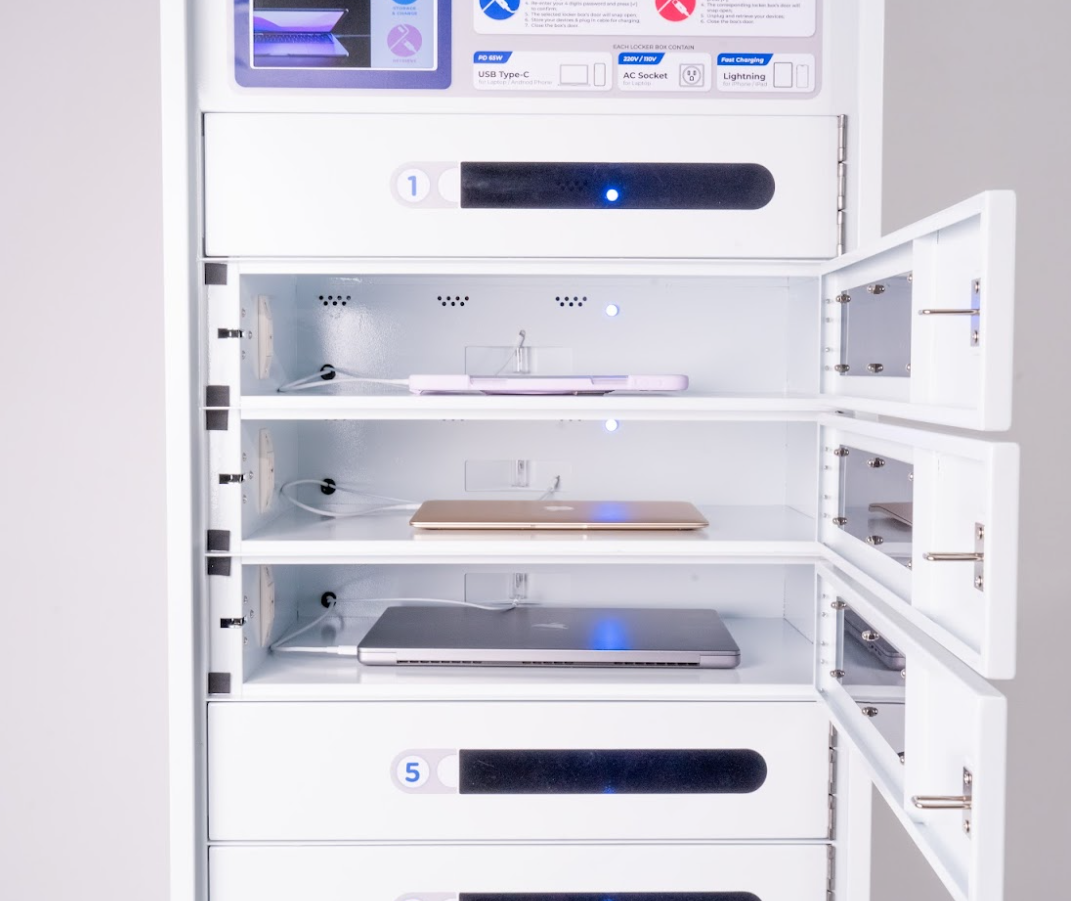
One of the biggest leaps from “traditional storage” to smart lockers is the capability to harvest actionable insights. From usage frequency to maintenance patterns, the software behind smart storage lockers compiles data that can help you optimize your workflow:
- Utilization Rates: See which locker bays are used most, and which devices are the busiest.
- Peak Times: Identify the busiest times of day for equipment check-out, then coordinate schedules or order more devices to handle the surge.
- Preventive Maintenance: If usage logs show that a certain piece of equipment is checked out far more frequently, you can schedule timely servicing.
- Employee Accountability: With a digital record of every transaction, it’s far easier to address consistent lateness in returning equipment.
Overall, these insights translate to tangible, cost-saving decisions. You can reallocate existing resources more effectively, keep tabs on potential bottlenecks, and reduce downtime from poorly timed maintenance.
6- Employee Empowerment
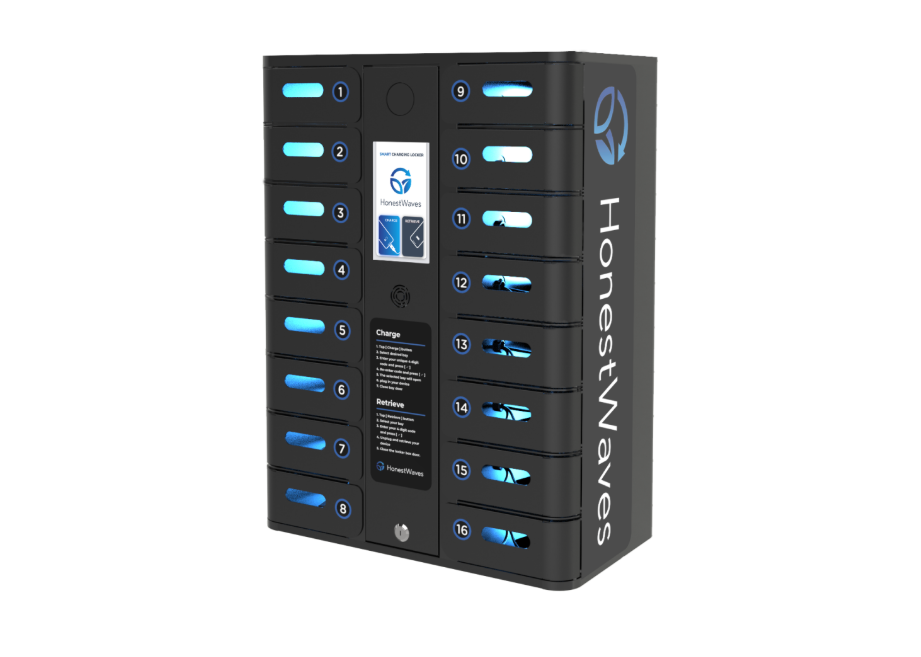
On top of all that, Warehouse Asset Smart Lockers provide a sense of autonomy and empowerment for employees. Rather than relying on a manager or security guard to unlock a cabinet, employees can quickly retrieve what they need using their personal credentials.
This self-service model encourages trust and fosters a culture of accountability. Workers no longer feel micromanaged; they gain immediate, direct access to the items they need, which can increase overall job satisfaction.
Moreover, workers appreciate the convenience of a system that ensures devices are readily available and fully charged. This can reduce frustration and stress, encouraging them to remain engaged and productive on the warehouse floor. In a competitive labor market, small improvements in the employee experience go a long way in helping businesses retain skilled personnel.
What to Look for in Warehouse Asset Smart Lockers
Implementing a Warehouse Asset Smart Locker is an investment. You want to choose hardware and software that align with your operational needs – both now and in the future. Here are some key things to consider:
Secure Storage and Charging Compartments
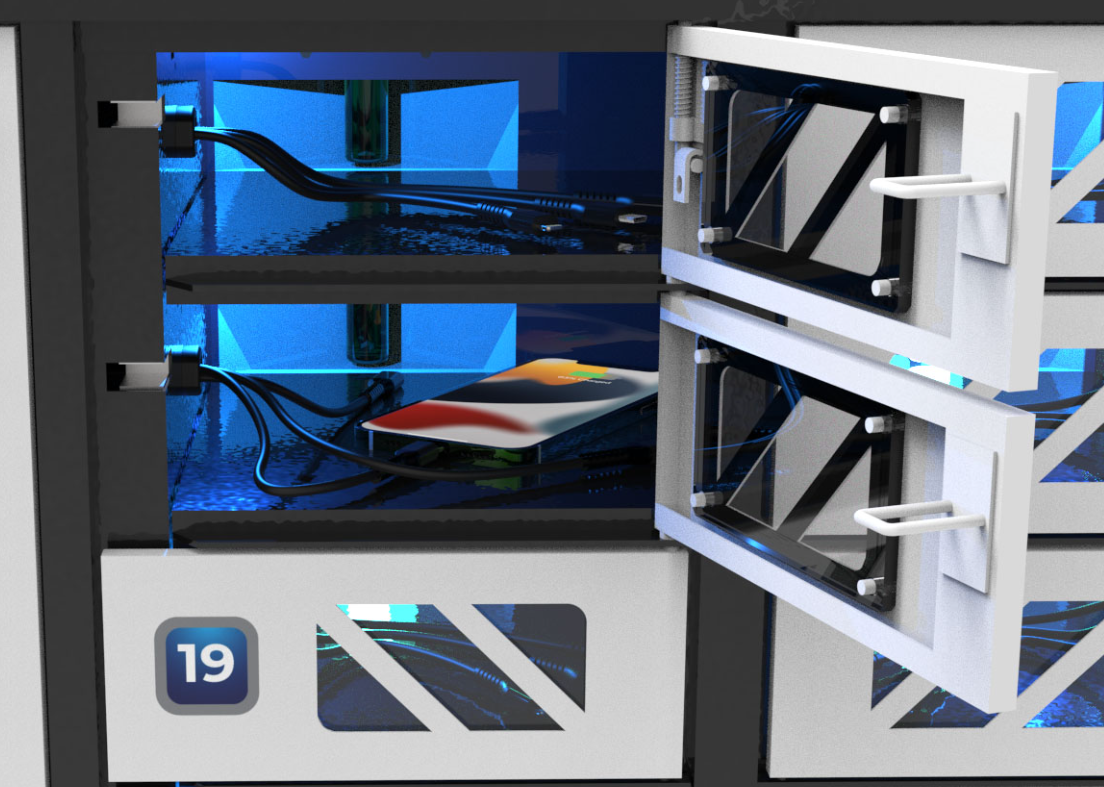
One of the first priorities is ensuring that your lockers aren’t just empty compartments—they should also have the capacity to charge devices securely. This is especially critical in warehouses that use handheld computers, tablets, or other battery-dependent assets. Look for:
- Integrated Charging Ports: AC outlets, USB ports, or specialized charging cables suited to the equipment your warehouse uses.
- Overcharge Protection: For device longevity and safe operation.
- Sturdy Design: Industrial warehouses can be dusty, and occasionally, harsh conditions or heavy impacts might occur.
Among HonestWaves’ lineup, the HonestWaves Smart SecureCharge 32 is a good example for storing numerous devices at once, featuring robust compartments with built-in charging modules. Perfect for a large warehouse that has to manage many units concurrently.
24/7 Contactless Access
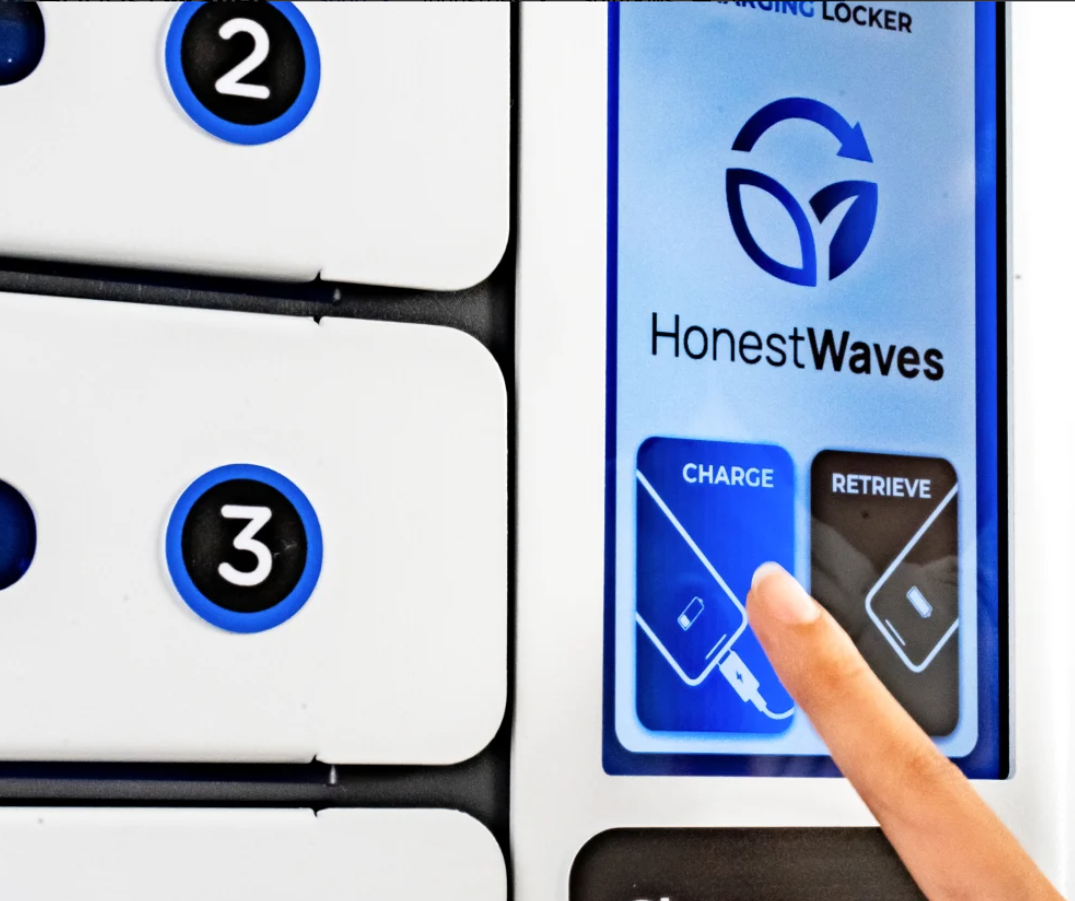
Warehouses often run multiple shifts, sometimes 24/7. Your locker system should match that schedule with round-the-clock access—without requiring extra staff to manage checkouts. Contactless access options (RFID badges, fobs, etc.) streamline usage and minimize direct handling.
The Device SmartLocker 30, for instance, incorporates a user-friendly RFID panel and optional mobile-based QR code authentication, allowing staff to unlock compartments any time, day or night, with minimal friction.
Multiple Access Methods

The best smart storage lockers come with flexible authentication. While some warehouses might rely heavily on employees wearing RFID badges, others might prefer a numeric PIN-based system to keep costs down. You might even require multi-factor authentication for particularly sensitive tools. Leading vendors—like HonestWaves—offer lockers that integrate multiple access methods:
- PIN or Passcode: Simple, cost-effective, easy to deploy.
- RFID or Proximity Cards: Great if employees already carry ID badges for building entry.
- Biometric: For next-level security, typically via fingerprint or facial recognition hardware.
- QR Code: A contactless approach that leverages employee smartphones or a printed code.
- Traditional Keys: Useful as a fallback in emergencies, though they’re rarely the primary method.
Be sure to pick a solution that fits your warehouse’s workflow and offers the best balance of security and ease of use.
Cloud-Based Management
As your operation grows, centralizing control over a network of lockers is key. Warehouse Asset Smart Lockers with cloud-based management make it possible for supervisors to:
- Remotely monitor locker usage
- Assign or revoke user permissions instantly
- Check real-time locker availability
- Access reporting analytics
HonestWaves offers a robust web portal and mobile application for remote locker administration. Should you need to expand to multiple warehouse sites, cloud-based solutions make it simpler to scale and maintain uniform policies across locations.
Advanced Security
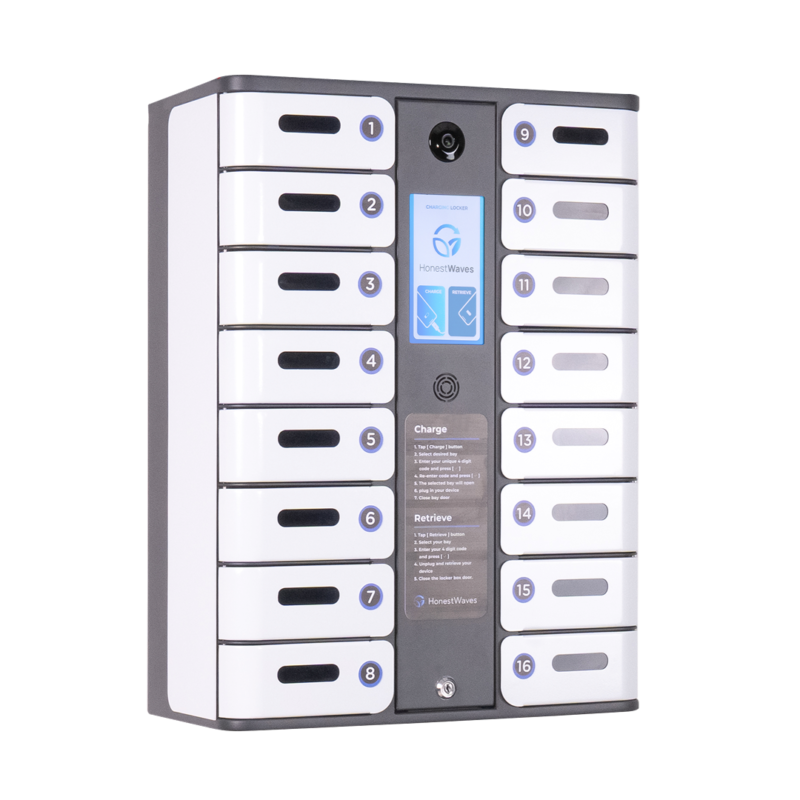
Warehouse environments demand advanced security to protect valuable or sensitive equipment. Look for lockers that include:
- Tamper-Proof Construction: Reinforced steel, secure door hinges, and robust locking hardware that withstand heavy usage.
- Real-Time Alerts: Automatic notifications if a locker is forced open or if someone repeatedly enters an incorrect PIN.
- Audit Trail: Every access event is logged with user information and timestamps.
HonestWaves’ Smart Locker 16 goes a step further, offering real-time usage tracking, power usage reports, dual authentication, and biometric finger print scanning. There’s even an integrated camera that can connect with your existing security and access control software.
Although not every warehouse needs that degree of surveillance, it’s worth considering if you handle extremely valuable or regulated goods.
Customization Options

Not every warehouse is the same, and a one-size-fits-all locker may leave you with wasted space or compartments that don’t suit your device dimensions. High-quality asset management lockers should allow you to customize:
- Compartment Sizes: For everything from small handheld scanners to larger industrial tablets or specialized tools.
- Branding/Exterior Design: A chance to incorporate your warehouse’s color scheme or messaging (especially if you have a public-facing area).
- Software Integrations: Perhaps you want to tie in your existing ERP or warehouse management system (WMS).
Many HonestWaves solutions – including the HonestWaves Device Smart Locker 30 – can be outfitted with specialized compartments to hold various device types, ensuring a perfect match for your operation.
Other Specialist Considerations
Since every warehouse operation is different, you might find you need lockers with specific features, like UV sanitizing solutions (for healthcare-focused warehouses), or capabilities like:
- Environmental Controls: Temperature- or humidity-controlled lockers for sensitive equipment (though more common in labs or medical warehouses).
- Battery Backup: Ensures the electronic locks still function in case of power outages.
Offline Modes: If network connectivity goes down, some systems store the latest user permissions locally so that employees can keep working uninterrupted.
The Future of Warehouse Asset Lockers
Demand for warehouse asset smart lockers is only increasing as security threats, and technology continue to evolve. Over the last few years, innovators like HonestWaves have already introduced warehouses to the benefits of IoT devices, and predictive analytics – which can help with resource allocation, business management, and maintenance.
Biometric enhancements are helping to upgrade security, reducing reliance on traditional keys and keypads, and expanded cloud integrations are empowering companies to connect their lockers to more of the software systems they use for inventory and asset management.
Going forward, we can expect to see new trends in:
- AI-Driven Recommendations: AI can crunch usage data, device performance stats, and labor scheduling info to advise managers in real-time on resource allocation. For instance, AI might notice that certain handheld scanners are overutilized at specific times and automatically prompt the purchase (or reallocation) of additional scanners to prevent bottlenecks.
- Sustainability: Many modern organizations push for green initiatives, and warehouse lockers will follow suit. Solar-powered or energy-efficient lockers that optimize battery usage, reduce e-waste, and streamline equipment lifecycles are likely to become standard in large-scale supply chains. HonestWaves is among the companies exploring eco-friendly materials and energy-management features in the next generation of smart storage lockers.
Industry-Specific Solutions: As technology evolves, vendors will craft lockers specifically tailored to specialized warehouse niches—e.g., cold storage compartments for certain regulated products, or explosion-proof designs for hazardous materials. Expect more direct input from large corporations shaping the next wave of product design.
Elevate Operations with Warehouse Asset Smart Lockers
In an industry where speed and precision can make or break your competitive edge, Warehouse Asset Smart Lockers are becoming increasingly vital. They streamline asset handling, improve security, reduce downtime, and offer invaluable data insights. Plus, they empower employees to focus on what matters most: efficient, accurate movement of inventory from point A to point B.
If you’re ready to enhance the way your workforce manages critical equipment, consider exploring the smart package lockers and asset management lockers available from HonestWaves. Our portfolio of smart storage lockers includes a variety of specialized designs – some perfect for small handheld devices, others equipped for large-scale charging and advanced security.
You’ll find solutions tailored to your unique warehouse environment, complete with robust software that integrates into your existing operational framework. Upgrade your warehouse operations with HonestWaves today. Get a custom quote.
FAQs
What are warehouse asset smart lockers?
Warehouse asset smart lockers are secure, automated storage solutions that use technology to streamline the distribution and tracking of devices, tools, and equipment in warehouse environments. They feature electronic locking mechanisms, charging ports, and integrated software that connects to cloud or on-premises management systems for comprehensive asset control.
How do smart lockers differ from traditional storage solutions?
Unlike traditional lockers or open shelves, smart lockers provide digital access control, real-time tracking, automated record-keeping, and integrated charging capabilities. They eliminate manual sign-in/sign-out sheets, reduce human error, and offer complete audit trails for every item stored.
What types of equipment can be stored in warehouse asset smart lockers?
These lockers are designed to handle various warehouse equipment including RF scanners and barcode readers, portable label printers, handheld computers and tablets, power tools, personal protective equipment (PPE), specialized warehouse devices, and mobile devices and communication equipment.
What are the main benefits of implementing smart lockers in warehouses?
The key benefits include improved tracking with complete audit trails, enhanced security through digital access controls, increased productivity by eliminating equipment search time, better efficiency with real-time asset visibility, actionable insights from usage data and analytics, and employee empowerment through self-service access.
How do smart lockers improve warehouse security?
Smart lockers enhance security through digital credentials such as PIN codes, RFID badges, biometric scans, and QR codes. They feature tamper-proof construction with reinforced materials, provide real-time alerts for unauthorized access attempts, maintain complete audit trails with user information and timestamps, and offer role-based access permissions for different employee levels.
Can smart lockers charge devices while they’re stored?
Yes, most warehouse asset smart lockers include integrated charging capabilities with built-in AC outlets and USB ports, specialized charging cables for various devices, overcharge protection for device safety and longevity, and fast-charging technology to ensure devices are ready for the next shift.
What access methods are available for smart lockers?
Modern smart lockers typically offer multiple access options including PIN or passcode entry, RFID badges or proximity cards, biometric authentication through fingerprint or facial recognition, QR code scanning via smartphones, mobile app-based digital keys, and traditional keys as emergency backup.
Can access permissions be customized for different employees?
Yes, smart locker systems allow administrators to create different user roles with varying permission levels. You can control which employees can access specific lockers, set time-based access restrictions, and assign different security clearance levels based on job requirements.

